The AMD A10-7700K and AMD A6-7400K CPU Mini-Review
by Ian Cutress on May 27, 2015 9:00 AM ESTGaming Benchmarks
As mentioned previously, this mini-review will focus on a few elements but all our data can be found in Bench, including tests with high end ($300+) graphics cards and some 4K testing.
Alien: Isolation
If first person survival mixed with horror is your sort of thing, then Alien: Isolation, based off of the Alien franchise, should be an interesting title. Developed by The Creative Assembly and released in October 2014, Alien: Isolation has won numerous awards from Game Of The Year to several top 10s/25s and Best Horror titles, ratcheting up over a million sales by February 2015. Alien: Isolation uses a custom built engine which includes dynamic sound effects and should be fully multi-core enabled.
For low end graphics, we test at 720p with Ultra settings, whereas for mid and high range graphics we bump this up to 1080p, taking the average frame rate as our marker with a scripted version of the built-in benchmark.
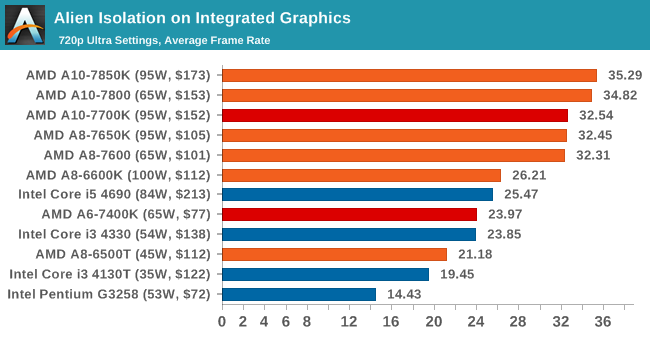
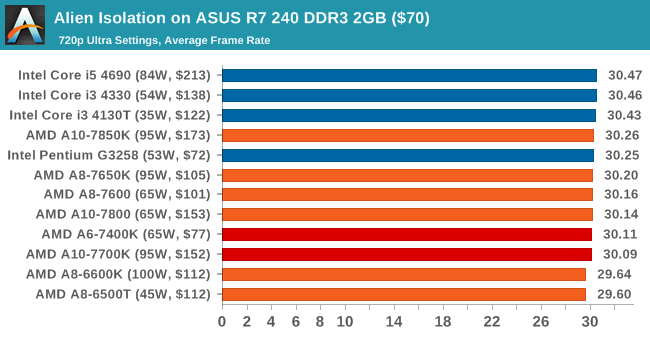
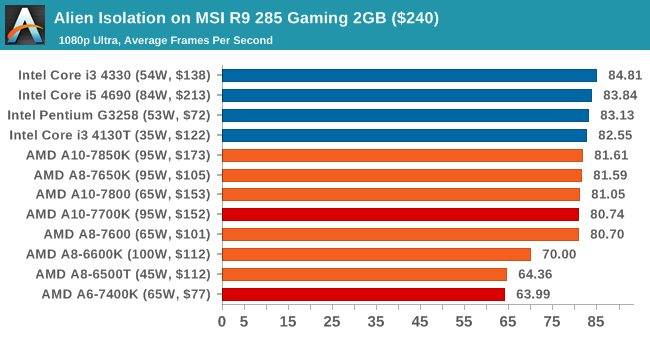
Total War: Attila
The Total War franchise moves on to Attila, another The Creative Assembly development, and is a stand-alone strategy title set in 395AD where the main story line lets the gamer take control of the leader of the Huns in order to conquer parts of the world. Graphically the game can render hundreds/thousands of units on screen at once, all with their individual actions and can put some of the big cards to task.
For low end graphics, we test at 720p with performance settings, recording the average frame rate. With mid and high range graphics, we test at 1080p with the quality setting. In both circumstances, unlimited video memory is enabled and the in-game scripted benchmark is used.
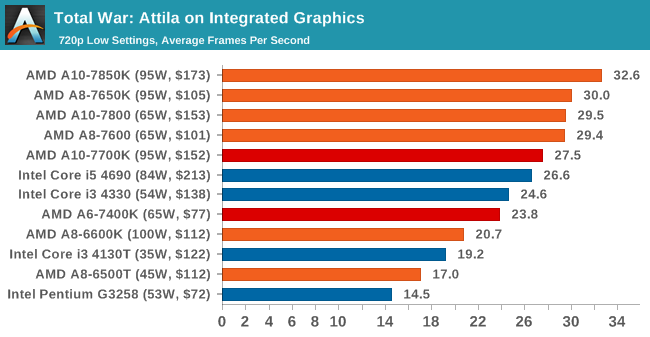
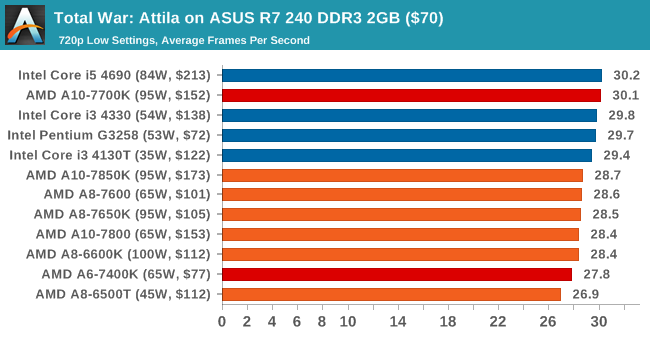

Grand Theft Auto V
The highly anticipated iteration of the Grand Theft Auto franchise finally hit the shelves on April 14th 2015, with both AMD and NVIDIA in tow to help optimize the title. GTA doesn’t provide graphical presets, but opens up the options to users and extends the boundaries by pushing even the hardest systems to the limit using Rockstar’s Advanced Game Engine. Whether the user is flying high in the mountains with long draw distances or dealing with assorted trash in the city, when cranked up to maximum it creates stunning visuals but hard work for both the CPU and the GPU.
For our test we have scripted a version of the in-game benchmark, relying only on the final part which combines a flight scene along with an in-city drive-by followed by a tanker explosion. For low end systems we test at 720p on the lowest settings, whereas mid and high end graphics play at 1080p with very high settings across the board. We record both the average frame rate and the percentage of frames under 60 FPS (16.6ms).

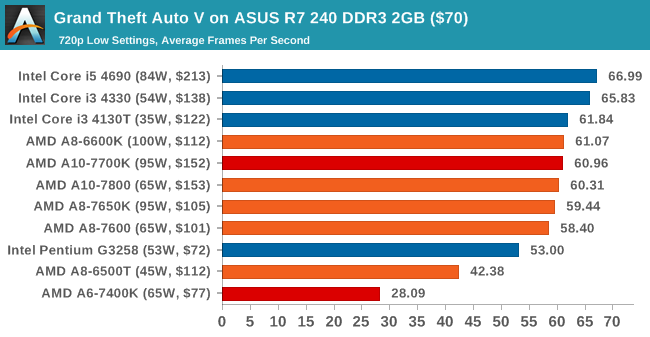

GRID: Autosport
No graphics tests are complete without some input from Codemasters and the EGO engine, which means for this round of testing we point towards GRID: Autosport, the next iteration in the GRID and racing genre. As with our previous racing testing, each update to the engine aims to add in effects, reflections, detail and realism, with Codemasters making ‘authenticity’ a main focal point for this version.
GRID’s benchmark mode is very flexible, and as a result we created a test race using a shortened version of the Red Bull Ring with twelve cars doing two laps. The car is focus starts last and is quite fast, but usually finishes second or third. For low end graphics we test at 1080p medium settings, whereas mid and high end graphics get the full 1080p maximum. Both the average and minimum frame rates are recorded.
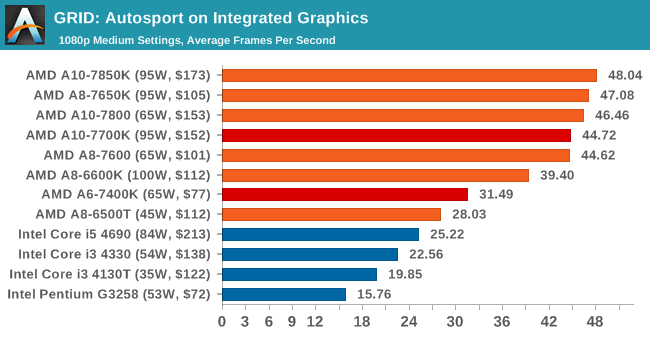
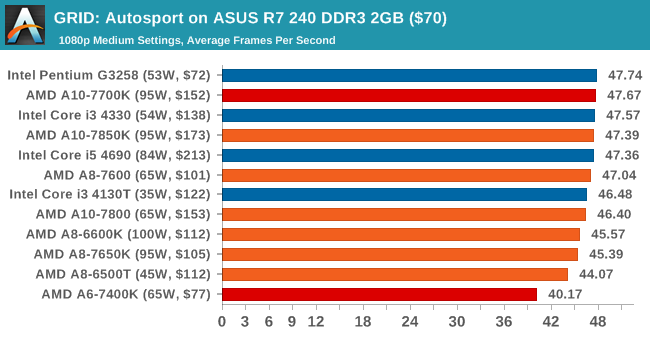
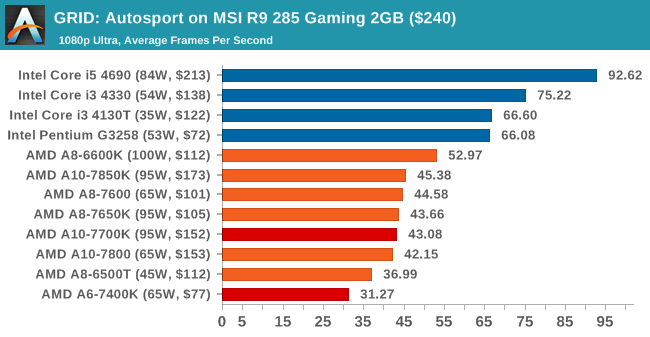
Middle-Earth: Shadows of Mordor
The final title in our testing is another battle of system performance with the open world action-adventure title, Shadows of Mordor. Produced by Monolith using the LithTech Jupiter EX engine and numerous detail add-ons, SoM goes for detail and complexity to a large extent, despite having to be cut down from the original plans. The main story itself was written by the same writer as Red Dead Redemption, and it received Zero Punctuation’s Game of The Year in 2014.
For testing purposes, SoM gives a dynamic screen resolution setting, allowing us to render at high resolutions that are then scaled down to the monitor. As a result, we get several tests using the in-game benchmark. For low end graphics we examine at 720p with low settings, whereas mid and high end graphics get 1080p Ultra. The top graphics test is also redone at 3840x2160, also with Ultra settings, and we also test two cards at 4K where possible.

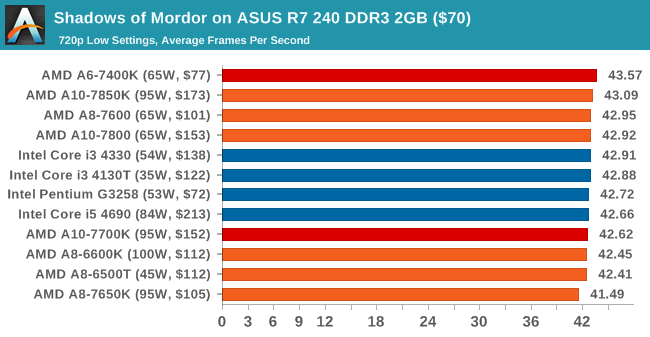
![Shadows of Mordor on MSI R9 285 Gaming 2GB ($240) [Minimum FPS]](https://images.anandtech.com/graphs/graph9287/74558.png)
I added some 4K numbers here, just to see the difference at a higher resolution. It turns out that for average frame rates at least, Shadows of Mordor is CPU agnostic. A fast CPU gets a higher rating in minimum frames however.


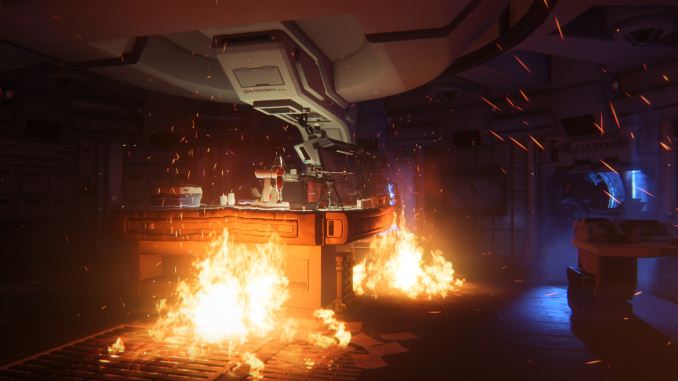


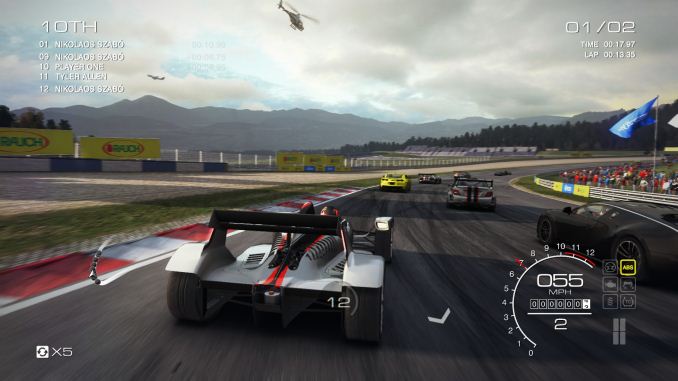
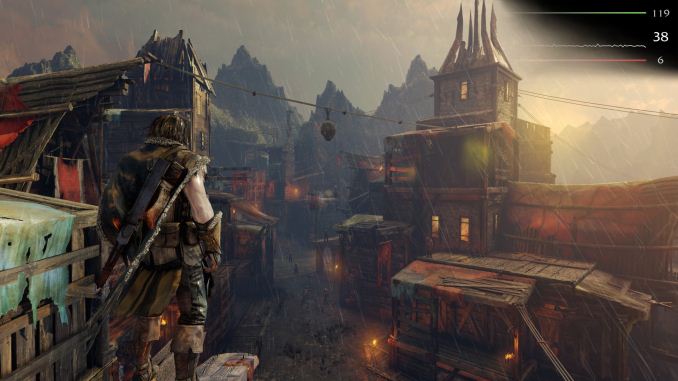
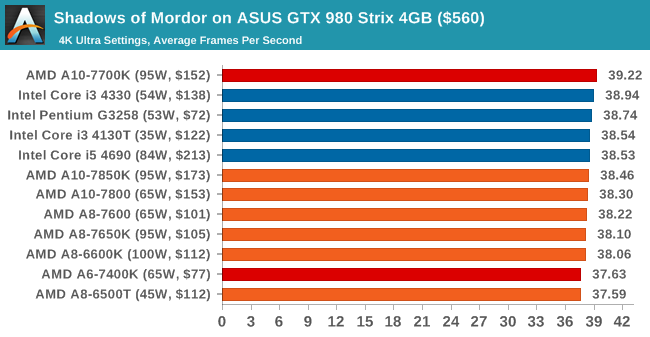
![Shadows of Mordor on ASUS GTX 980 Strix 4GB ($560) [Minimum FPS]](https://images.anandtech.com/graphs/graph9287/74592.png)








105 Comments
View All Comments
Flunk - Wednesday, May 27, 2015 - link
AMD's marketing department are a bunch of jerks. The A10-7700K has the iGPU from the A8 line! That's going s screw up a lot of people who don't know what they're buying. AMD could really benefit from clearer branding. Trying to be more obscure than Intel is not a good plan. This is the equivalent of Intel launching a new i5 chip with only 2 cores or an i7 without hyperthreading. The one thing that made buying the A10 worthwhile was that iGPU.
Based on the pricing and performance difference they could easily just have one of each category A10, A8, A6 and Athlon and not lose anything. AMD's marketing idiots are not their only problem but you can't beat the market leader if you under perform them at every step. Clearer marketing would be a real help.
jabber - Wednesday, May 27, 2015 - link
AMD and marketing go together like oil and water. They have always been hopelessly inept at it.Essence_of_War - Wednesday, May 27, 2015 - link
*raises hand*I was that guy.
I built my brother a mostly TF2 box to upgrade his ancient athlon desktop this past christmas, and I picked up an A10-7700k for him thinking it had the same igpu as the rest of the A10 line, not the A8 line. :/
WorldWithoutMadness - Wednesday, May 27, 2015 - link
Not your fault. Just blame those AMD guys.If you ever met with AMD employees, ask him whether he knows or if he is in charge on naming the product. Punch the guy who gave this atrocious naming
Alexvrb - Wednesday, May 27, 2015 - link
I always look at specs before I purchase something. Especially since, the part numbers are nearly useless by themselves. I don't care if it's AMD, Nvidia, Intel, Asus, G.Skill, or anyone else. If you get roped in by a product number, your geek card is suspended for a few months. :-PBeany2013 - Saturday, May 30, 2015 - link
Could be worse. I bought an A8 3870 APU. Then bought a motherboard without video output.I'm amazeballs, I am.
Still, for what I do, paired up with an R280 (was 7770) it's fine. I'm waiting for the Zen cores to come out before considering an upgrade, we'll see how they compare to whatever Intel is pushing at that point in terms of price/performance.
akamateau - Thursday, May 28, 2015 - link
If you upgrade to Windows 10 then your build will be pretty dam good. In fact it will be a far better gaming rig than ANY Intel i3, i5 or i7.nandnandnand - Thursday, May 28, 2015 - link
Did you get your M$ check?Alexvrb - Thursday, May 28, 2015 - link
They paid him the same amount they are going to charge him for a Windows 10 upgrade. He was also probably mentioning it because that chip will benefit greatly in the future from low-level APIs such as DX12. Good troll, I mean try, though.Edens_Remorse - Wednesday, May 27, 2015 - link
In so far as budget gaming is concerned AMD is not under-performing at all. The 860k(and 870k no doubt) is a far more intelligent choice than the similarly priced G3258. It's a shame this test was done the day before Godavari's launch. For those of us not red/green colorblind a review of the 7870k and 870k with their larger stock cpu coolers and improved IPC would have been very welcome.